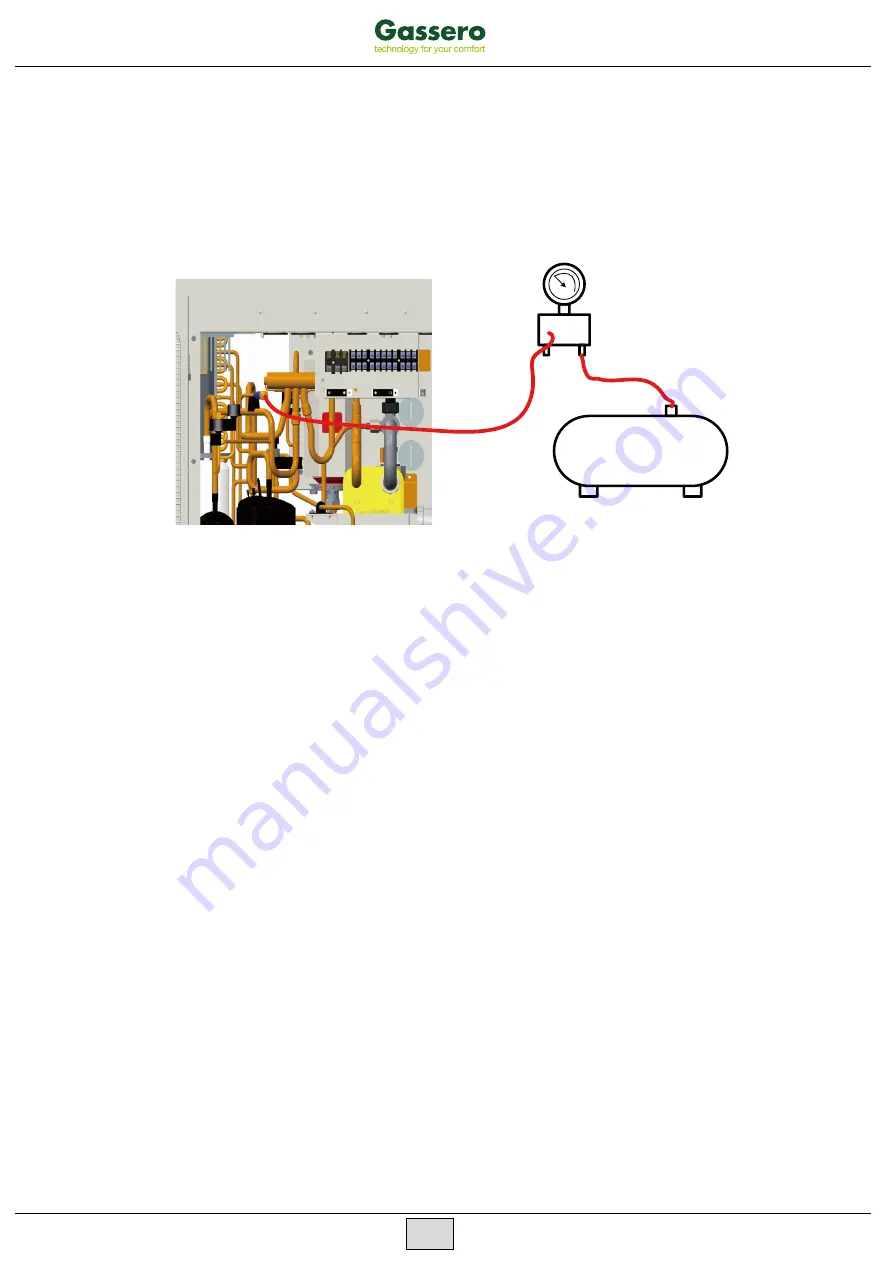
29
Not :
a. Discharge is allowed unless the unit has been stopped. (Cut off the power and repower it 1 minutes later)
b. Protective measures should be taken during discharging to avoid frost bites.
c. When discharging is finished, if vacuuming cannot be done immediately, remove the hose to avoid air or
foreign matters entering the unit.
Vacuuming
: when discharging is finished, use hoses to connect the charging valve, manometer and vacuum
pump to vacuum the unit.
Note:
When vacuuming is finished, pressure inside the unit should be kept lower than 80Pa for at least 30 minutes to
make sure there is no leak. Either charging valve 1 or charging valve 2 can be used for vacuuming.
Charging
: When vacuuming is finished and it is certain that there is no leak, charging can be done
Leak Detection Methods
:
1. The following leak detection methods are deemed acceptable for systems containing flammable
refrigerants.
2. Electronic leak detector shall be used to detect flammable refrigerant, but the sensitivity may not be
adequate, or may need re-calibration(Detection equipment shall be calibrated in a refrigerant-free area).
3. Ensure that the detector is not a potential source of ignition and is suitable for the refrigerant used.
4. Leak detection equipment shall be set at a percentage of the LFL of the refrigerant and shall be calibrated
to the refrigerant employed and the appropriate percentage of gas (25% maximum) is confirmed.
5. Leak detection fluids are suitable for us with most refrigerant but the use of detergents containing chlorine
shall be avoided as the chlorine may react with the refrigerant and corrode the copper pipe-work.
6. If a leak is suspected, all naked flames shall be removed / extinguished. If a leakage of refrigerant is found
which requires brazing, all of the refrigerant shall be recovered from the system, or isolated (by means of
shut off valves) in a part of the system remote from the leak. Oxygen free nitrogen (OFN) shall then be
purged through the system both before and during the brazing process.
Note :
Before and during operation, use an appropriate refrigerant leak detector to monitor the operation area and
make sure the technicians can be well aware of any potential or actual leakage of inflammable gas. Make sure
the leak detecting device is applicable to inflammable refrigerant. For example, it should be free of sparks,
completely sealed and safe in nature.
Vacuum pump
Connection Pipe
Pressure Meter






























